Markets of Victorian London
Article about the markets of London as part of a small group educational tour of England, Scotland and Wales as well as Europe. Collection of Articles about Victoria and her England including the industrial revolution for senior couples and mature solo travelers.
5 Dec 19 · 9 mins read
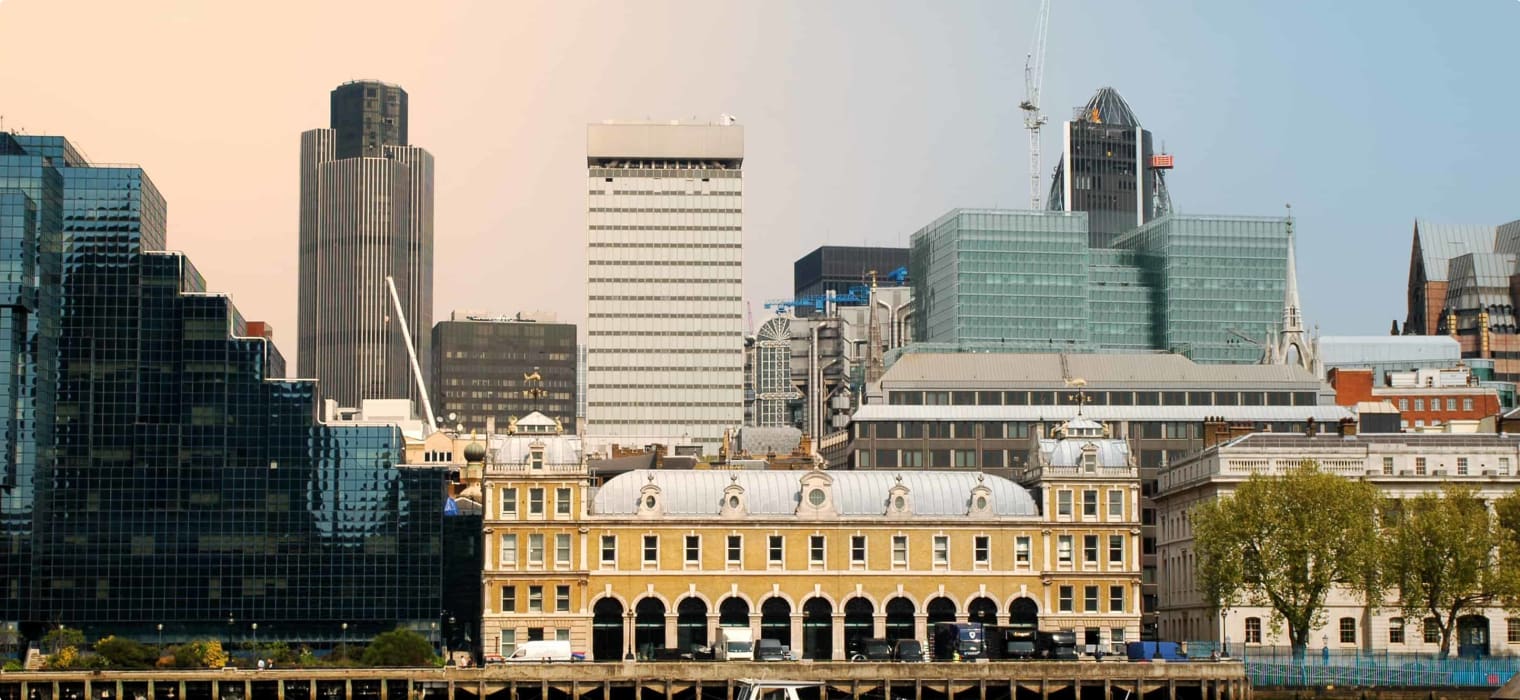
Markets of Victorian London
In the 19th century, markets were at the heart of London life. While industrialisation had meant that an increasing number of shops opened up to the public, people continued to do most of their daily shopping at markets. But markets were more than just places to shop. To visitors and residents of the city, they seemed to encapsulate Victorian London: vast, chaotic, and teeming with human life in all its diversity.
The writer Henry Mayhew, observer of the London poor, described the typical market scene vividly:
‘The pavement and the road are crowded with purchasers and street-sellers. The housewife in her thick shawl, with the market-basket on her arm, walks slowly on, stopping now to look at the stall of caps, and now to cheapen a bunch of greens. Little boys, holding three or four onions in their hand, creep between the people, wriggling their way through every interstice, and asking for custom in whining tones, as if seeking charity. Then the tumult of the thousand different cries of the eager dealers, all shouting at the top of their voices, at one and the same time, is almost bewildering. (Mayhew, London Labour and the London Poor).
For more information about life in Victorian London, we urge you to read Judith Flanders’ Victorian City: Everyday Life in Dickens’ London, which was used in the writing of this article.
This is part of our collection of England-related articles that we share as backgrounders before you go on an England tour with us, or to simply help you as you firm up your travel plans. All of those articles can be found here. Travellers with a particular interest in 19th century England may be interested in our tour of Queen Victoria’s Britain, or Canals and Railways, which tells the story of the Industrial Revolution.
Covent Garden:
Covent Garden was London’s largest and most vibrant market, a bustle of chaos and confusion as thousands of street sellers converged on a tiny piazza to sell their wares. For Charles Dickens in Little Dorrit it was a place of extremes and contradictions, where ‘romance, abundance, want, beauty, ugliness, fair country gardens, and foul street gutters … all confused together.’
The market had been established in 1678, when the Dukes of Bedford, owners of the surrounding land, were granted a 250-year lease for a market. Yet, for centuries afterwards Covent Garden’s primary draw was entertainment, and the market mostly went unnoticed. Two of London’s most popular theatres, the Drury Lane Theatre and the Royal Opera on Bow Street were in the vicinity, attracting crowds of theatre-goers. Though the Dukes of Bedford had intended that Covent Garden would be a neighbourhood for ‘the habitations of Gentlemen’, the theatre-goers and commercial market brought vice with them, and by the end of the 18th century the neighbourhood was full of coffeehouses, book shops, drinking dens, gambling houses and brothels.
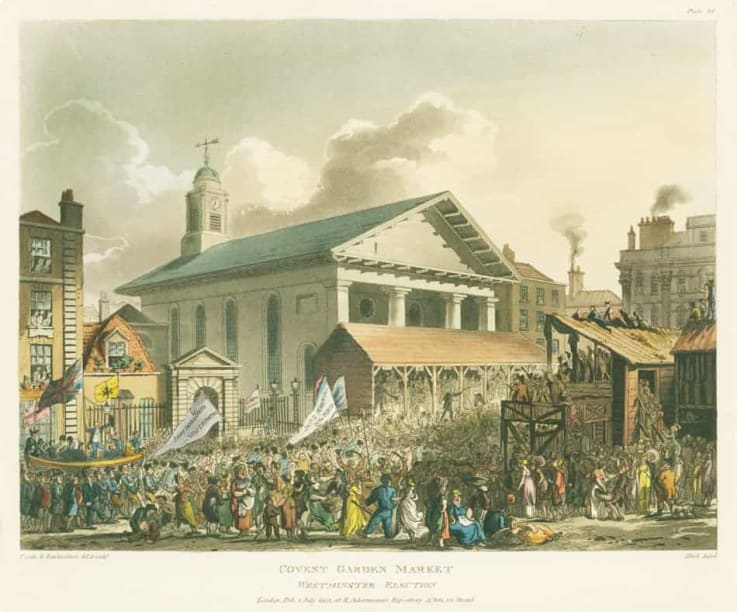
In the 19th century the market rapidly expanded, overflowing from its initial position on the central piazza to the surrounding streets. The size of the market, which specialised in fresh produce – fruits, vegetables, flowers – was dazzling. Other trades lined the outside of the market. In the early 1820s the Bedford Estate extended their lease and received permission to build permanent structures. Flower Hall, built to house the flower sellers, was built in the 1850s, and followed the style of the Great Exhibition’s iconic Crystal Palace.

Like something out of a novel by Charles Dickens, many of the regulars at the market were colourful characters who captured the imagination of Victorian London. Costermongers were the heart of the market. Though the term refers strictly to those who sold fish, fruit and vegetables from carts on the street, the costermongers of Covent Garden sold goods ranging from silkworms to fried eels. They were assisted by barra boys, who pushed wheelbarrows full of goods.
Other porters in the market were Irish basket-women, who shocked Victorian London by being as strong, alcoholic and foul-mouthed as their male counterparts. They sat around the piazza ‘smoking short pipes’ and offering to carry loads – often on their back or head – for customers who could not afford a horse or cart.
The most enduring Covent Garden characters were the flower-girls, young girls who supplemented their parents’ income by selling flowers. They were famously ‘persevering’, following on the heels of passers-by and shouting in the particular jargon of the market: ‘Please, kind lady, buy my violets. Oh, do, please! Poor little girl! Do buy a bunch, please, kind lady!’ (Mayhew, London Labour and the London Poor, 1851). These Covent Garden flowergirls inspired the character of Eliza Doolittle, heroine of George Bernard Shaw’s Pygmalion, and later portrayed by Audrey Hepburn in the musical My Fair Lady.

Covent Garden remained in operation as a market into the 20th century, but was relocated in early 1974. The site remained empty until 1980, when it reopened as a market, now home to artisan goods and emerging local designers.
Smithfield Market:
London’s other great market, the Smithfield meat market, was a flashpoint for controversy through the 19th century. The site had been used as London’s livestock market since the Middle Ages, when it was a broad, grassy area known as Smooth Field right on the edge of the city. In addition to the meat market, Smooth Field was used through the Middle Ages for public gatherings. In 1390, King Richard II held one of Europe’s largest tournaments on the sites, in which knights came to London from England, Scotland, Germany, Flanders, and France. The site was also used for public executions of heretics and dissidents: Sir William Wallace, leader of the First War of Scottish Independence (and the subject of the movie Braveheart) was executed on Smithfield in 1305, as was Wat Tyler, the leader of the Peasant’s Revolt in 1381. During the English Reformation, King Henry VIII executed Catholics on Smithfield – while his Catholic daughter, Mary I, would do the same to Protestants a couple of decades later.
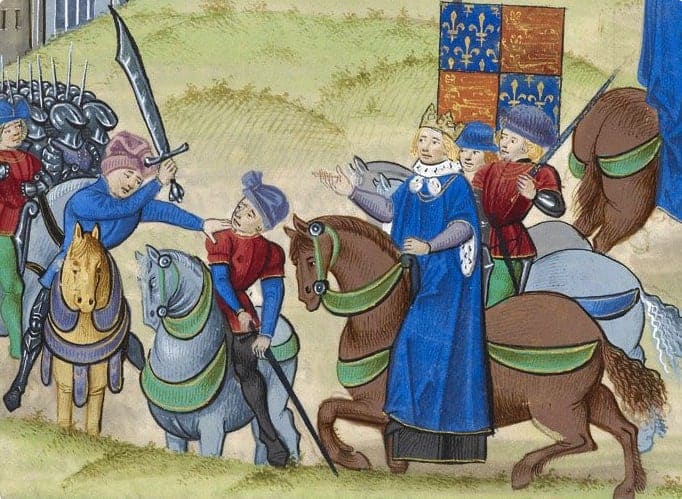
In the 17th century London grew rapidly and Smithfield was no longer on the edge of the city. By the early 18th century, the site had become primarily a meat market, described by Daniel Defoe as ‘without question, the greatest in the world.’ Between 1740 and 1750, the average yearly sales at Smithfield were around 74,000 cattle and 570,000 sheep – by the mid 19th century, this had become 220,000 cattle and 1, 500,000 head of sheep.
The amount of livestock forced into a small square in the middle of London each day – and the resulting poor hygiene, stench, and animal cruelty – became a major issue of concern in the Victorian Era. As one pamphlet claimed:
Of all the horrid abominations with which London has been cursed, there is not one that can come up to that disgusting place, West Smithfield Market, for cruelty, filth, effluvia, pestilence, impiety, horrid language, danger, disgusting and shuddering sights, and every obnoxious item that can be imagined; and this abomination is suffered to continue year after year, from generation to generation, in the very heart of the most Christian and most polished city in the world. (Maslen, Suggestions for the Improvement of our Towns and Houses, 1843).
One American visitor claimed to avoid the market because he loathed the ‘fiendish brutality of their drivers’, with calves ‘piled into a cart … their heads being suffered to hang out of the cart at each end, and to beat against the frame at each end, and to beat against the frame at every jolt of the vehicle.’ (quoted Flanders, The Victorian City, 128). Prongs were stuck into the tender part of bulls’ feet and their tails were twisted in order to get them into their allotted stands, while blows were frequently inflicted on the cattle.
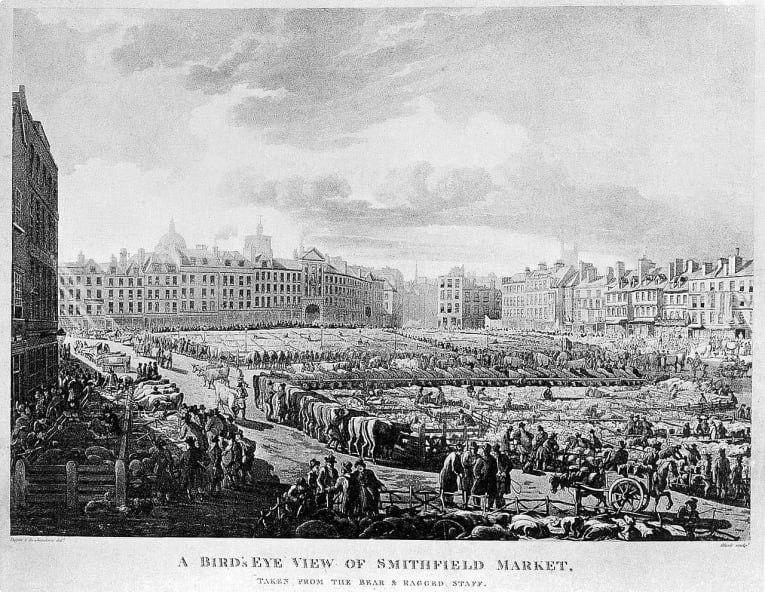
The market posed a threat to public safety, as animals – driven wild by the cruelty – ran amok. Charles Dickens wrote in his journal of being in the market in the 1850s when the cry ‘Mad bull! Mad bull!’ was heard. The streets cleared until the owner found the animal in ‘a back parlour … into which he had violently intruded through a tripe-shop’ (quoted Flanders, The Victorian City, 129).
The early 19th century saw a movement to have the market shut down emerge. There were parliamentary inquiries into Smithfield in 1828, 1849, and 1850, but nothing could move the City of London to act as Smithfield made a lot of money for the city, around 10,000 pounds a year. The obvious solution to the problem was to move the market to the outskirts of the city – but since this meant moving the market out of the council area, the City of London stalled.
Finally, in 1852, Parliament passed a bill providing for its removal, and the meat market was closed in 1855. In 1868 the ground was converted into a dead-meat market. The new market was a showcase of Victorian modernity, iron-roofed and lit by gas, complete with restaurants and drinking establishments.
The new meat market remained in operation almost until the present day, London’s only wholesale market not to move out into the suburbs in the 20th century. In 2019, it was announced that the market would move to the outskirts of London, while the site would be taken over by the Museum of London.
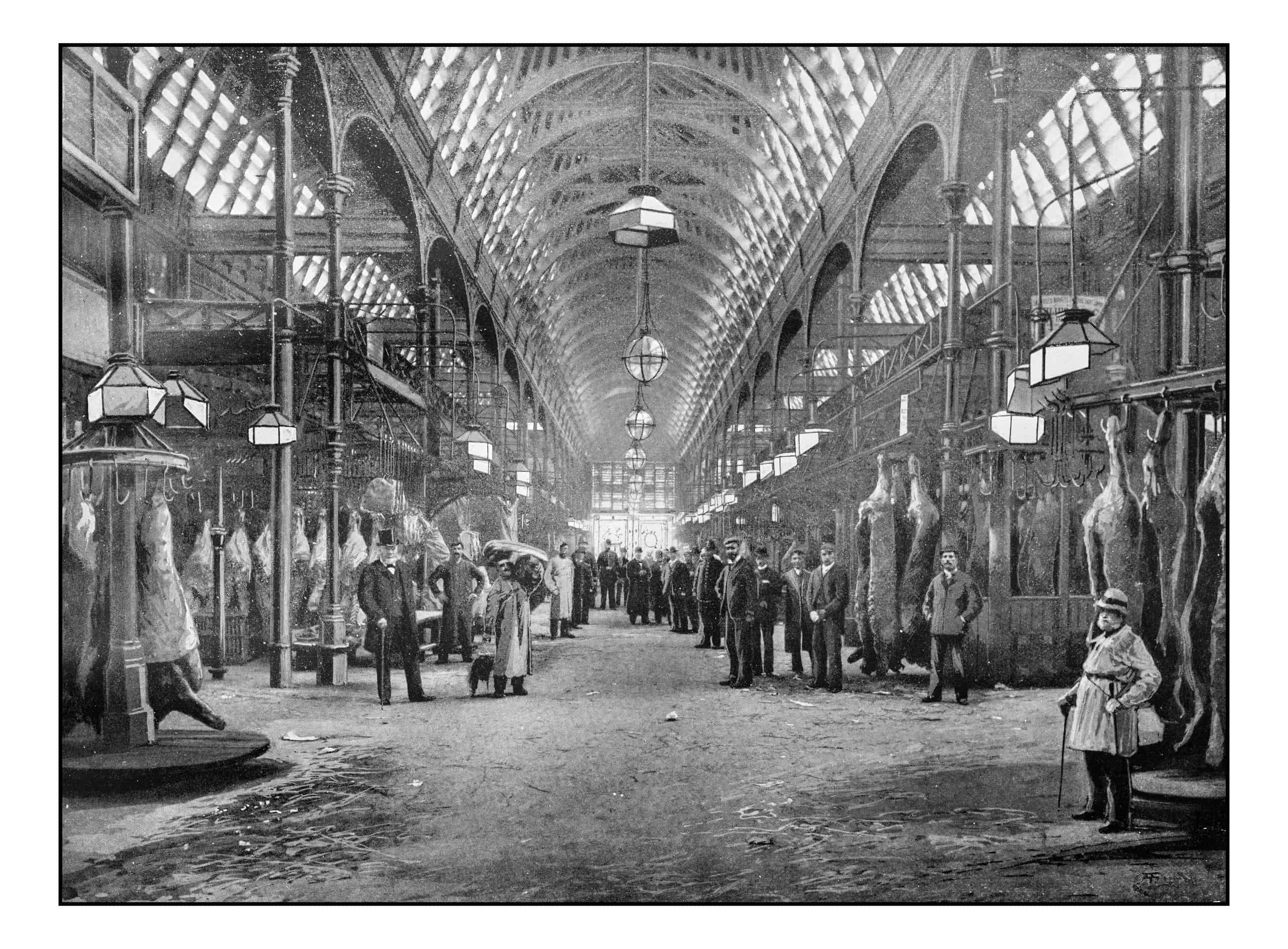
Billingsgate Fish Market:
The other major market in London was Billingsgate Fish Market, held on the Thames riverside between London Bridge and the Tower of London. The market was first established in the seventeenth century, though fish had been sold informally on the site for centuries before.
At the time, Billingsgate was the world’s largest fish market. Despite this, it did not appear particularly impressive: the market was held in the open street until 1849, when it moved into a number of rather dilapidated sheds and stalls.
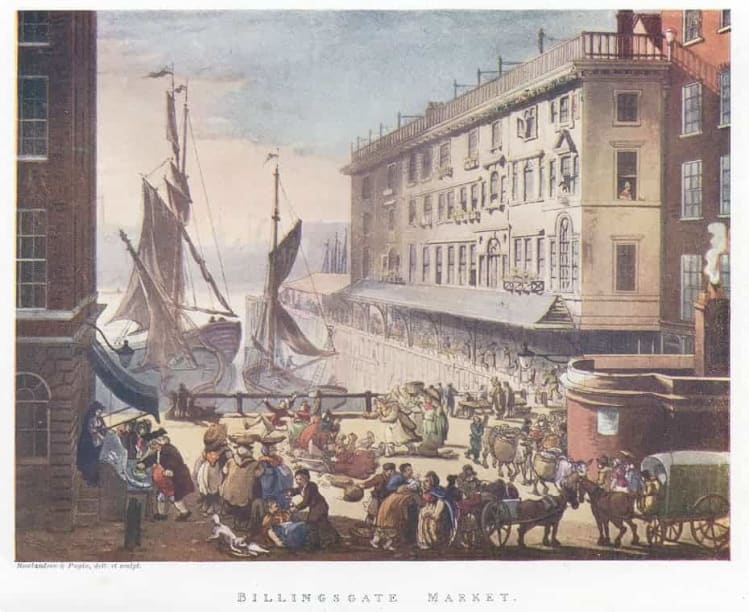
In the early 19th century, the market sold the local catch. In 1810, 400 boats fished the river between Deptford and London Bridge, providing Thames roach, plaice, smelts, flounder, salmon, eel, dace and dab. In the 1820s, increased pollution meant that the London fisheries were destroyed, and fish were transported up the Thames from downriver and the coast. By the 1850s, eel were brought from the Netherlands, while fish were caught in the North Sea and then transported to the market by train.
Work at Billingsgate started early, with workers arriving on site before 4 am. Many met at the local tavern, the Darkhouse, to discuss quality and prices over their favourite breakfast – gin laced with milk. At five the market opened with the ringing of the bell, and buyers headed towards their favorite stalls. It was a blur of action and excitement. Crowds gathered by each auctioneer as they set out baskets of fish. No examination was permitted and bidding began by Dutch auction, with the auctioneer setting a high opening price, which was dropped by increments until someone made an offer.
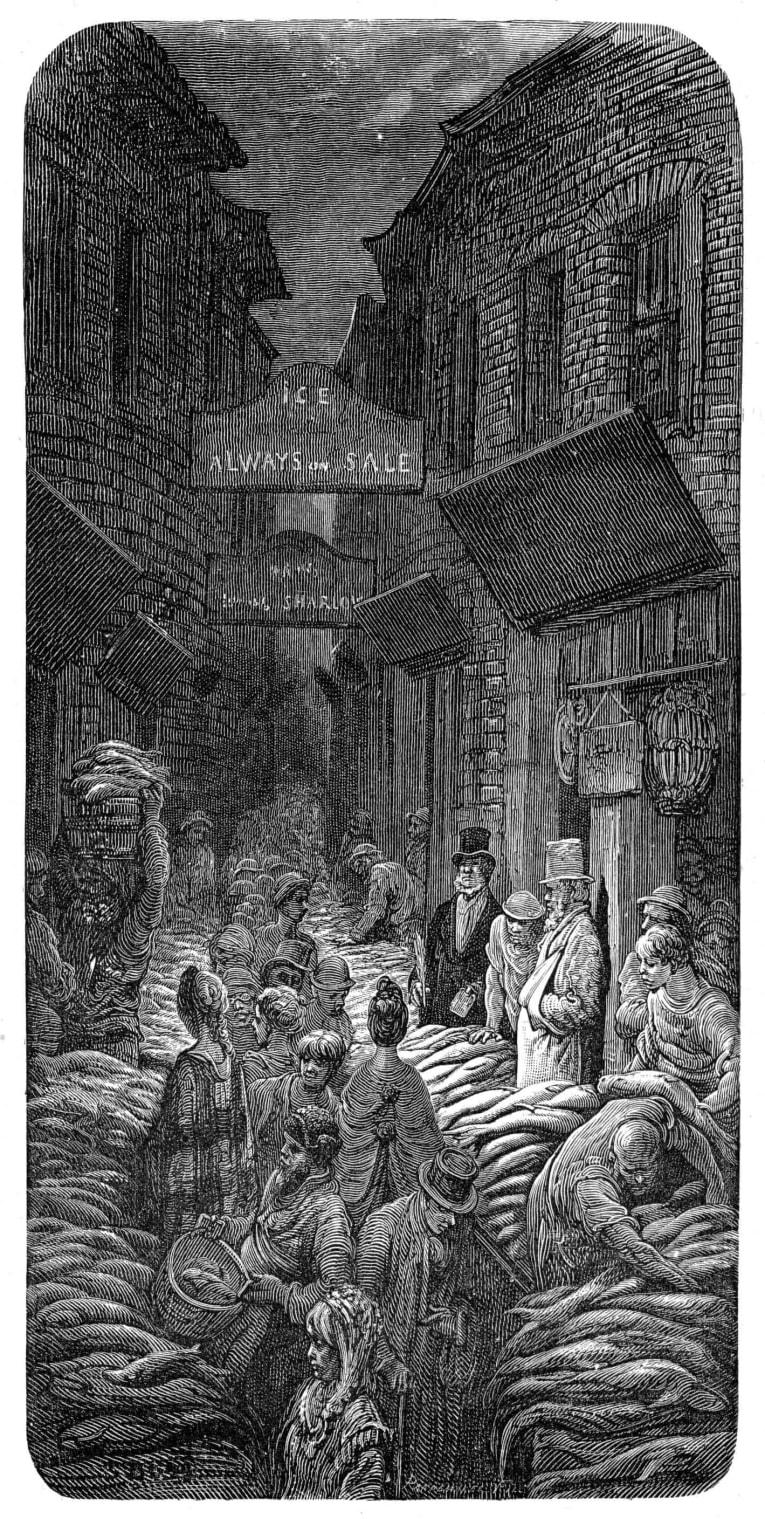
Due to increased crowding at the market, Billingsgate would be rebuilt and expanded in the 1870s. The new buildings were in elegant Italianate style, and the new market was twice the size of the old one.
The market would move down river in 1982, to the Isle of Dogs in Poplar. In 2019, plans to move the market to a consolidated site with Smithfield Market and New Spitalfields Market on the outskirts of London were announced.

Other markets:
The huge markets that drew people from around London were the exception, however. Most markets were simple neighbourhood affairs. In the 19th century, virtually every London neighbourhood had its own market, while many had more than one.
These markets sold produce, meats, and other provisions. Slaughterhouses providing the markets often existed in the middle of (poorer) residential neighbourhoods – something that most Victorians took for granted.
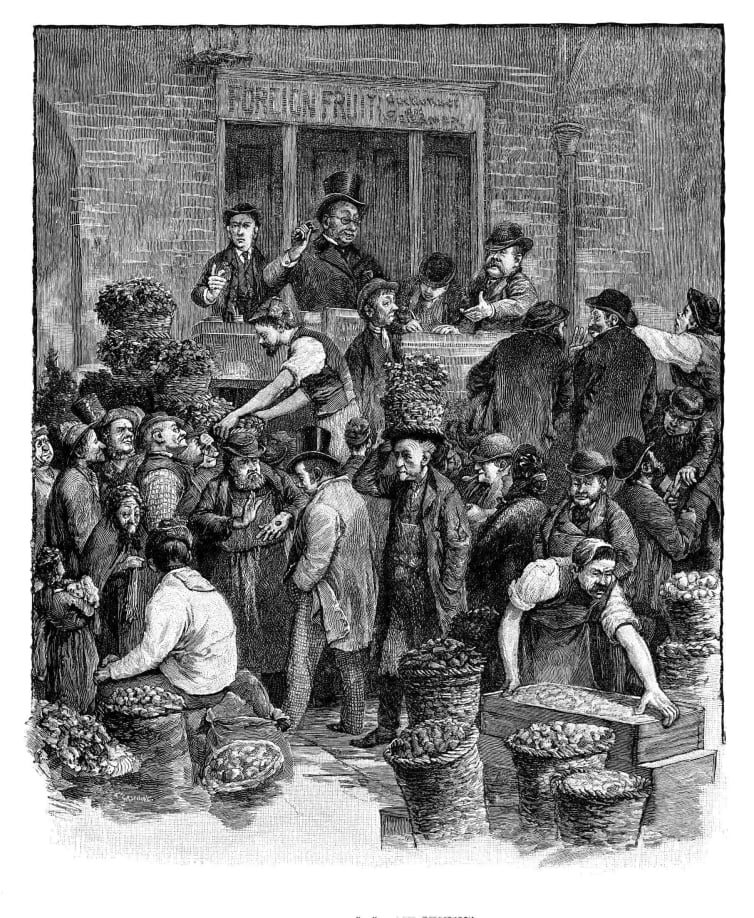
For London’s working-classes, the small markets were their main shopping location for most of the century. Wages were paid at the end of the working day on Saturday, and the markets started Saturday night. By the middle of the century, most markets had gas lighting, which vividly lit up the array of goods. The lights were matched by the noise, as each seller had their own cry enticing shoppers to their stalls.
The majority of shopping was done by women. They carried large baskets, some accompanied by their husbands. A moderately well-off artisan’s wife would start at the butcher stall to buy the Sunday roast – and didn’t hesitate to bargain with the seller. She then went on to the butterman, buying cheese, butter, and dairy, and then fresh fruit and vegetables.

The markets continued on Sunday but became less respectable. Middle class observers felt that decent people should be in Church on a Sunday and not out shopping. Most of the Sunday shoppers were very poor – women could not afford baskets, and instead carried purchases in their aprons. Men generally stood around and talked with their friends, or went to the barber – which often discreetly served ‘revivers’, or alcohol to cure a Saturday night hangover.
Another important form of market was the second-hand clothes market. The best known of these was Rag Fair (or Petticoat Lane) in the East End. Rag Fair was a place where migrants from around the world mingled. A large proportion of second-hand clothing sales people were Jewish, while other traders came from Ireland, North America, India, and Australia.
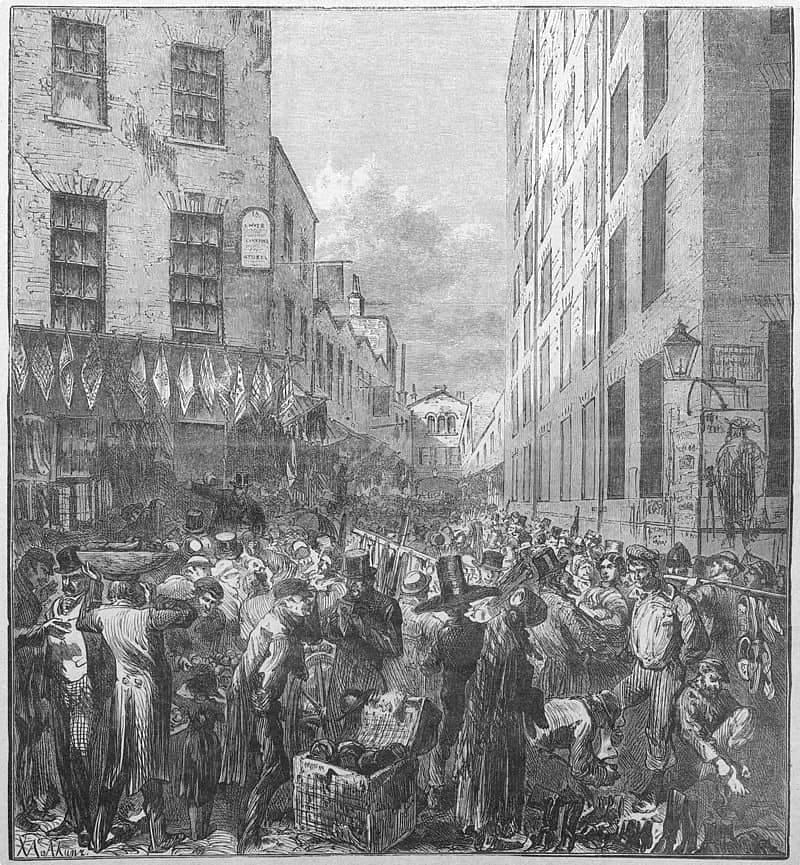
Petticoat Lane was renamed Middlesex Street in 1830. Despite the change, the market remained and has been in business ever since.
Related Tours
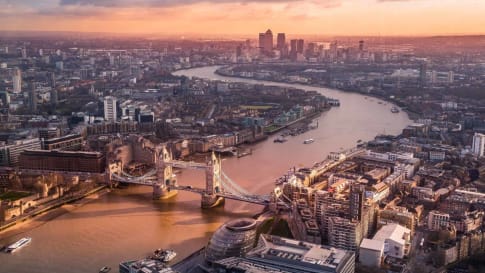
6 days
Apr, SepLondon Short Tour
Visiting England
A small group tour of London is a collection of day tours that visit and explore through the villages of the city. This escorted tour includes a journey out to Windsor castle. We explore Contemporary and learn about Roman Walled city, Medieval, Victorian London and the contemporary city today.
From A$6,995 AUD
View Tour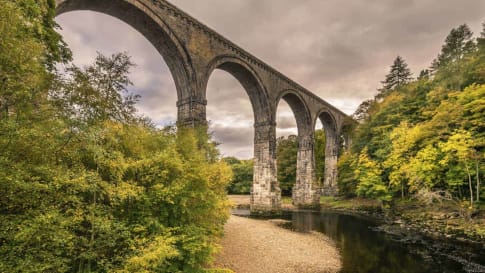
23 days
Oct, Apr, SepCanals and Railways in the Industrial Revolution Tour | Tours for Seniors in Britain
Visiting England, Scotland
A small group tour of Wales, Scotland & England that traces the history of the journey that is the Industrial revolution. Knowledgeable local guides and your tour leader share their history with you on this escorted tour including Glasgow, London, New Lanark & Manchester, Liverpool and the Lake district.
From A$17,860 AUD
View Tour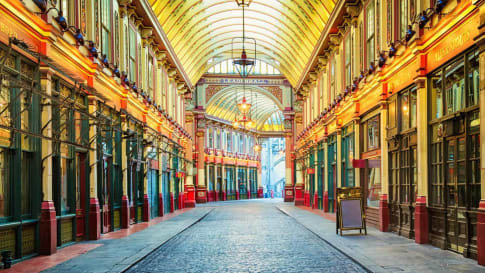
21 days
Sep, JunQueen Victoria's Great Britain: a small group tour
Visiting England, Scotland
A small group tour of England that explores the history of Victorian Britain. This escorted tour spends time knowledgeable local guides with travellers in key destinations in England and Scotland that shaped the British isles in this period including a collection of UNESCO world heritage locations.
From A$15,880 AUD
View Tour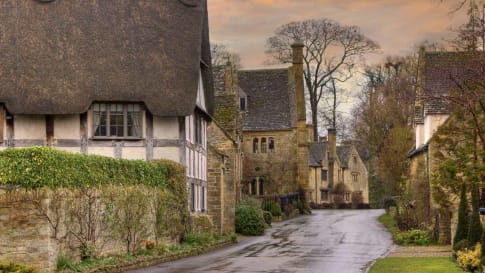
19 days
Jun, SepEngland’s villages small group history tours for mature travellers
Visiting England
Guided tour of the villages of England. The tour leader manages local guides to share their knowledge to give an authentic experience across England. This trip includes the UNESCO World heritage site of Avebury as well as villages in Cornwall, Devon, Dartmoor the border of Wales and the Cotswolds.
From A$16,995 AUD
View Tour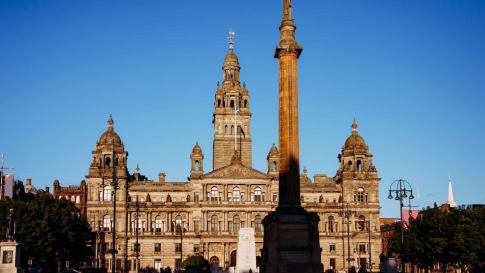
From A$13,915 AUD
View Tour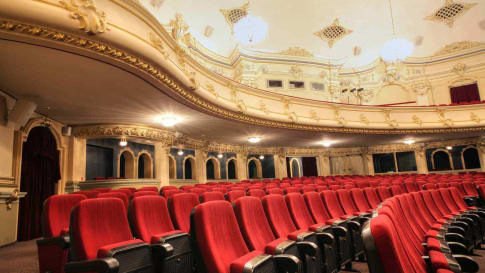
9 days
AugGilbert and Sullivan Festival Small Group tour
Visiting England
A 9 day tour with a tour director and local guide explore the Victorian music of Gilbert and Sullivan. We visit on this journey, Manchester, Harrogate, Oxford & London, attending the Gilbert & Sullivan festival and places of historic interest.
From A$9,350 AUD
View Tour
27 days
Jun, Aug, MaySmall Group Tour along the Wainwright Walking trail
Visiting England
Part of the small group tour of the British isles series, this walking tour goes west to east across England. The tour leader takes you into the national park of the UNESCO World heritage site in the Lake district and the North Yorkshire moors. This trip concludes in York. It is designed for senior walkers seeking authentic experiences.
From A$17,595 AUD
View Tour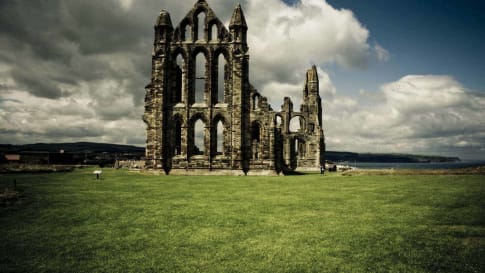
22 days
Sep, JunRural Britain | Walking Small Group Tour
Visiting England, Scotland
A walking tour into England, Scotland and Wales provides small group journeys with breathtaking scenery to destinations such as Snowdonia national park , the UNESCO world heritage site Hadrians wall and the lake district. each day tour provides authentic experiences often off the beaten path from our local guides.
From A$15,880 AUD
View TourRelated Articles
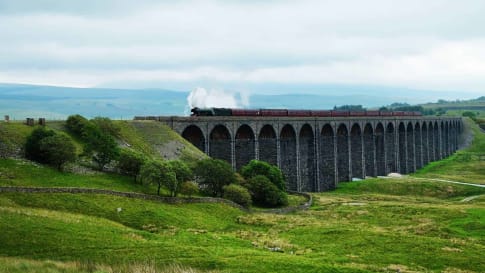
15 books on Britain's Industrial Revolution
Fifteen books on Britain’s Industrial revolution This reading list on Britain’s Industrial revolution complements Odyssey Travellers escorted small group tour that traces via the canal and railway network, the evolution of this monumental change in…
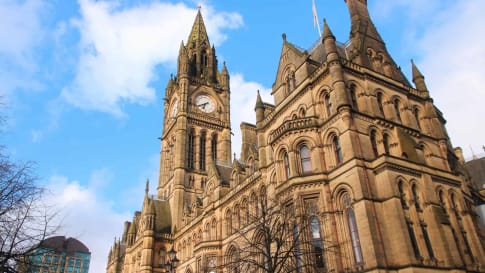
Bees in Manchester: a surprising symbol of the Industrial Revolution
Bees in Manchester: a surprising symbol of the Industrial Revolution The bee is an intriguing symbol for the city of Manchester. The city’s damp climate provided the ideal conditions for milling cotton. But this is…

London's Victorian Architecture: The Definitive Guide for Travellers
Small group educational tours for senior couples and mature solo travelers with History tours including those examining the Industrial revolution, Victorian Britain the Gilbert and Sullivan era via the D'Oyle Carte family and the cities such as Glasgow, Liverpool and Manchester.
Personalities from Queen Victoria's Britain
Article for senior couples and mature solo travellers exploring Queen Victoria's Empire including Britain and the personalities. Supports small group educational tour about the monarch and the industrial revolution.
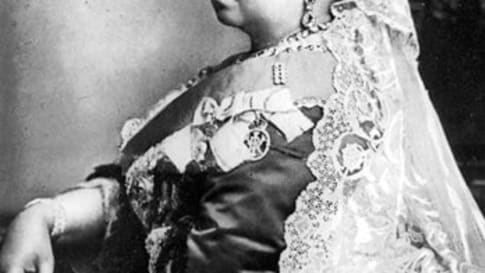
Personalities from Queen Victoria’s Britain
Article for senior couples and mature solo travellers exploring Queen Victoria's Empire including Britain and the personalities. Supports small group educational tour about the monarch and the industrial revolution.

Queen Victoria's Britain part 2: The Definitive Guide for Travellers
Queen Victoria’s Britain (Part 2 of 2) This two-part article on Queen Victoria’s Britain was prepared by one of our Odyssey Program Leaders, Mal Bock. She will be leading this small group tour especially designed for…
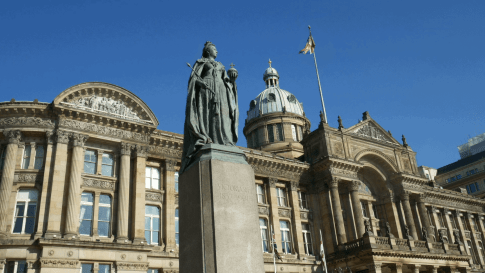
Queen Victoria's Britain: The Definitive Guide for Travellers
Article for educational small group tours of England for senior couples and mature single travellers. Queen Victoria, Britain's longest serving monarch through most of the Industrial revolution and rural life and the Empire is discussed in this article.


